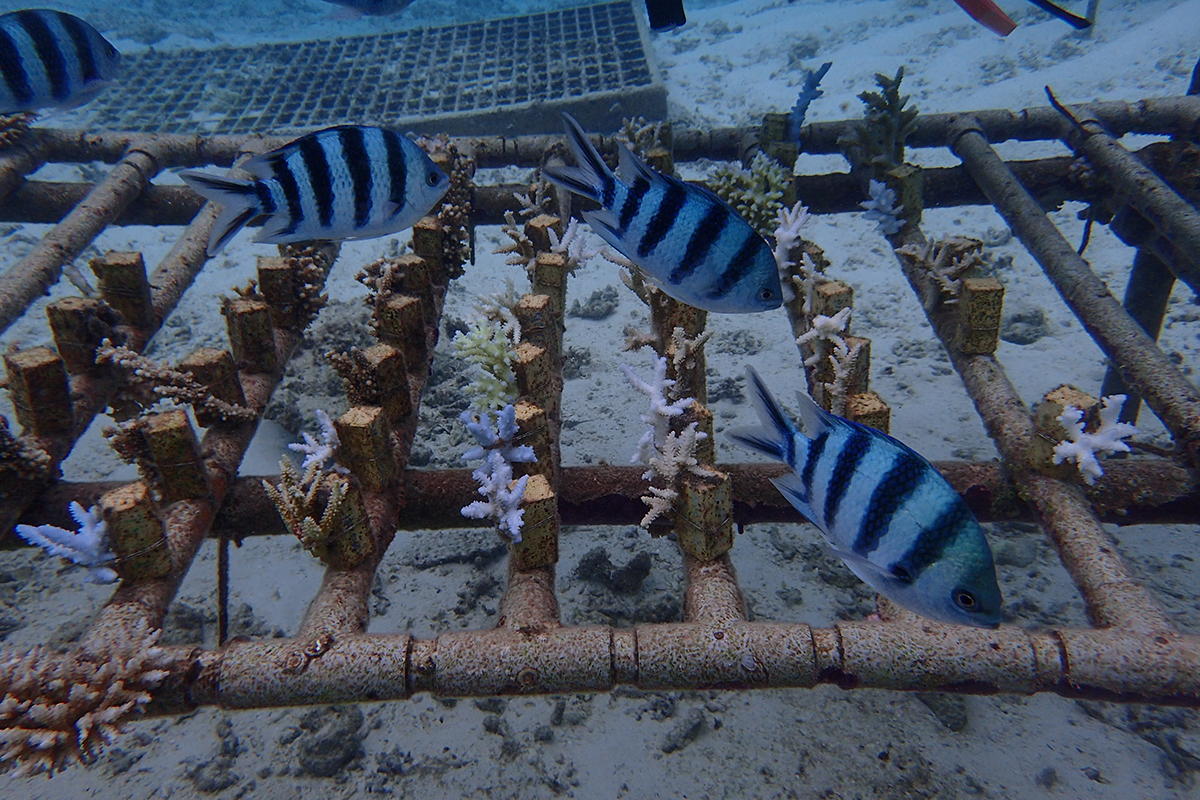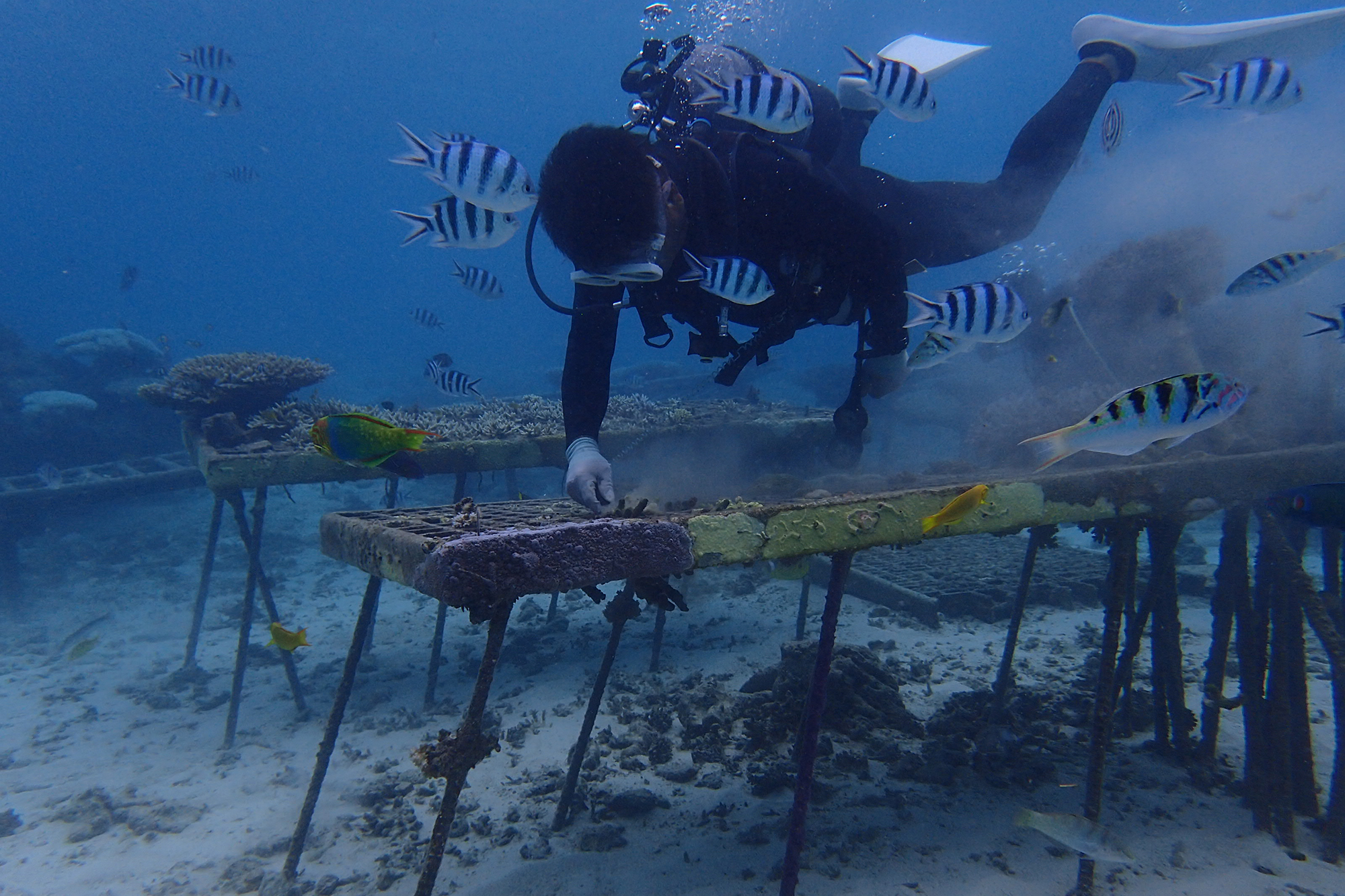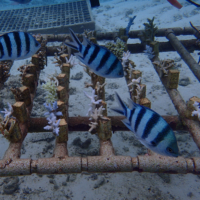Coral destruction and bleaching are among the adverse consequences of the warming of ocean waters, the increasing intensity of typhoons, the development of coastal lands and worsening marine pollution. The Kunming-Montreal Global Biodiversity Framework, adopted in 2022, calls for action to restore at least 30% of degraded ecosystems and conserve at least 30% of marine and coastal areas by 2030.
The Okinawa village of Onna, known as Onnason in Japanese, is a popular tourist destination renowned for its snorkeling and diving spots 45 kilometers north of Naha, the prefectural capital. In 2018, the Onna Village Office adopted the Coral Village Declaration, committing to the conservation and restoration of coral reefs through initiatives on coral farming and transplantation.
Mozuku, a seaweed native to Okinawa, is rich in water-soluble dietary fiber that supports the health of the immune system. Co-op supermarkets have established a trust fund for coral conservation, contributing 1% of revenue from mozuku sales. These funds support coral farming and transplantation in areas where reefs have been damaged or depleted.
Onna village continues to face challenges in optimizing tourism and enhancing the marine environment. The pandemic severely impacted the tourism sector in Okinawa in 2020 and the following years. However, one positive outcome has been the improvement in seawater quality in the area. Water visibility is better than before, allowing for clearer views of marine life, and coral growth has also improved.

Mozuku is marketed throughout Japan. Okinawa hotels serve the seaweed as part of their meal offerings, making the return of tourists essential for revitalizing the consumption of mozuku there. Consequently, it is increasingly acknowledged that rather than merely restoring the number of tourists to pre-pandemic levels, it is crucial to promote tourism in a way that does not compromise the enhanced marine environment.
Local sugarcane farmers strive to cover their land with grass species during the fallow period. Bare land contributes to red soil runoff, which increases sedimentation and turbidity, ultimately hindering the growth of corals and mozuku. Grass coverage mitigates red soil discharge into runoff and the marine environment while enhancing soil nutrients. Sugarcane farmers aim to boost sugarcane production while reducing red soil runoff to protect the marine ecosystem and support its productivity.
“Coral reefs symbolize a healthy ocean, which is vital for fisheries and mozuku farming,” said Masami Yamashiro, the managing director of Sea Growth, a nonprofit organization dedicated to coral reef conservation, and a former president of the Onna Village Fishery Association.





